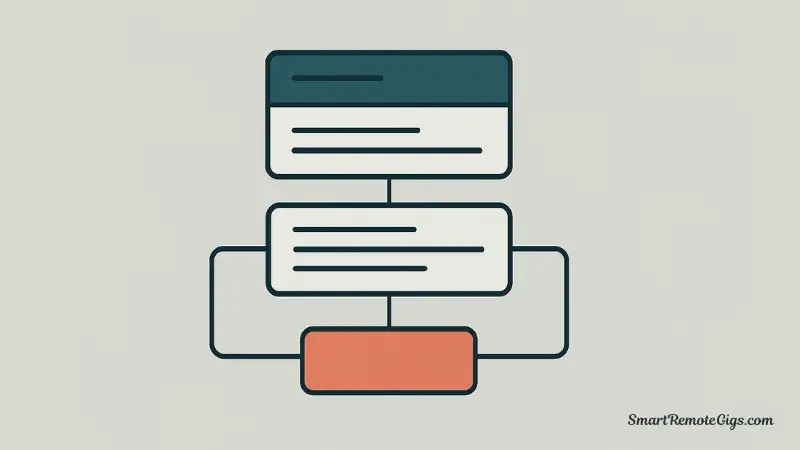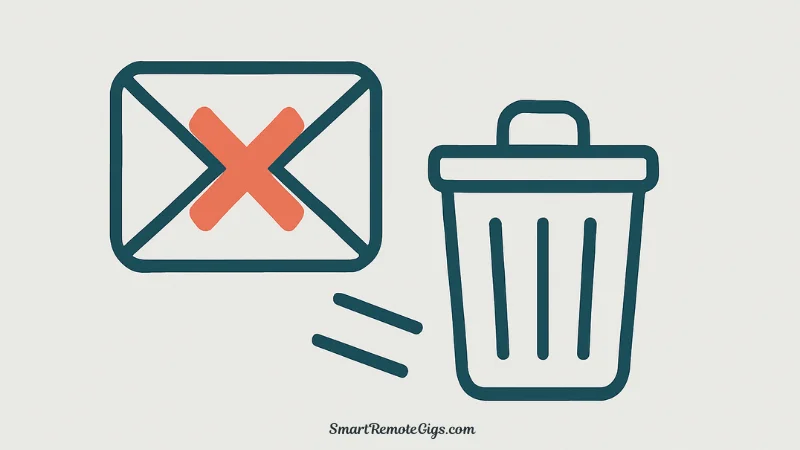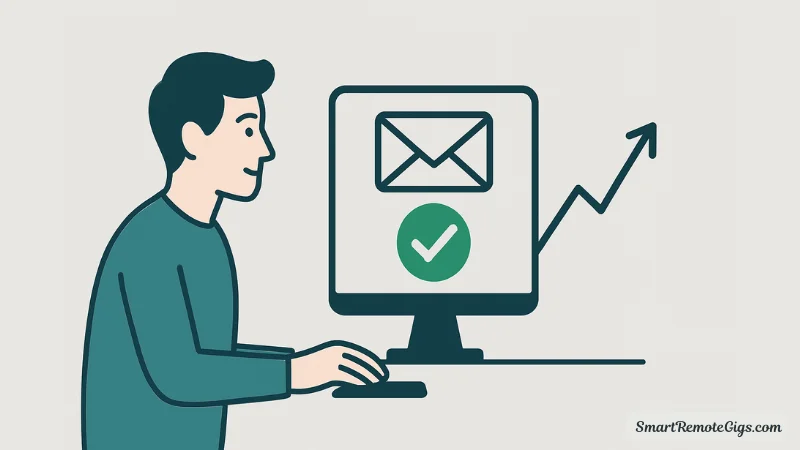Cold pitching feels intimidating. The fear of seeming pushy, spammy, or desperate keeps many talented freelancers from reaching out to potential clients. But here’s the reality: cold pitching is simply strategic outreach when done correctly.
The difference between a pitch that gets deleted and one that gets replies isn’t magic—it’s structure, personalization, and a genuine focus on solving problems. This guide provides a proven freelance cold pitch template that respects the recipient’s time while demonstrating the specific value you can provide.
By the end of this article, you’ll have a copy-paste-ready template and the strategic knowledge to customize it effectively for any potential client. More importantly, you’ll understand why this approach works, giving you the confidence to start your outreach today.
The Golden Rule: Research Before You Write
The template in this guide is powerful, but it’s useless without personalization. Generic, mass-sent pitches are obvious and get ignored. Taking 2-5 minutes to research each recipient transforms your pitch from spam into strategic outreach.

What to look for before writing your freelance cold pitch:
Company Intel: Look for new product launches, funding rounds, expansions, competitor positioning, or recent customer reviews that signal business priorities.
Content & Marketing: Review recent blog posts, press releases, social media presence, or brand voice to understand their communication style and gaps.
Personal Intel: Research the decision maker’s role, recent LinkedIn posts, professional interests, or initiatives they’re championing.
Problem-Solving Opportunities: Identify outdated website design, inconsistent branding, missing content, or technical issues you can directly address.
Pro Tip: Use LinkedIn to identify the right person to pitch (usually a marketing director, founder, or department head), and tools like Hunter.io to find their email address.
The goal is to find one specific, genuine detail that allows you to open with something like: “I saw your recent LinkedIn post about struggling with email engagement rates” rather than “I hope this email finds you well.”
Anatomy of a Pitch That Works
Before diving into the template, let’s understand the psychology behind each component of an effective freelance cold pitch template.

The Subject Line: Intrigue, Don’t Deceive
Your subject line determines whether your email gets opened. Aim for curiosity and relevance, never clickbait or deception.
Effective subject line formulas:
- The Question: “Quick question about [Company Name]’s [specific initiative]”
- The Idea: “Idea for improving [specific aspect] at [Company Name]”
- The Specific Reference: “Thoughts on your [recent post/article/announcement]”
- The Direct Approach: “Freelance [Your Service] for [Company Name]”
Why these work: They’re honest, specific to the recipient, and hint at value without overpromising.
Avoid:
- “You won’t believe this opportunity!”
- “URGENT: Important message”
- Anything that sounds like spam or clickbait
- Generic subject lines like “Collaboration” or “Working together”
The Personalized Opener: Show You’re Not a Robot
The first sentence must prove you’ve done your research. This is where the pre-pitch research pays off.
Strong openers reference:
- A specific piece of content they created
- A recent company announcement or achievement
- A noticeable problem or opportunity on their website
- A mutual connection or shared interest
Example: “I came across your recent article about increasing customer retention and noticed your email strategy focuses heavily on promotional content rather than value-driven sequences.”
Weak opener: “My name is John and I’m a freelance writer looking for new clients.”
The difference is obvious: one shows genuine interest and research, the other is self-focused and generic.
The Value Proposition: It’s About Them, Not You
This is the most critical section of your freelance cold pitch template. Your pitch must focus on their problem and your solution, not your credentials or services.
The formula:
- Identify a specific problem or opportunity
- Explain why it matters to their business
- Present your solution with a specific outcome
- Briefly establish credibility
Example structure:
“Based on your current blog content, it looks like you’re publishing once per month. For SaaS companies in your stage, consistent weekly content typically drives 3-4x more qualified leads. I specialize in creating technical blog content for SaaS companies that ranks in Google and converts readers into trial signups. My recent work with [similar company] increased their organic traffic by 180% in four months.”
What makes this work:
- Specific problem (low publishing frequency)
- Business impact (missed lead generation)
- Clear solution (weekly technical content)
- Relevant outcome (180% traffic increase)
- Credibility without bragging (similar client result)
The Soft Call-to-Action: Aim for a Conversation, Not a Job
Never ask “Do you have any work for me?” or “Are you hiring freelancers?” These questions make you sound desperate and put the burden on them.
Instead, propose a low-commitment next step that focuses on providing value:
Effective CTAs:
- “Would you be open to a brief 15-minute call next week to discuss your content strategy?”
- “I’d love to share a few specific ideas for improving your email campaigns. Do you have 20 minutes this week?”
- “Would it be helpful if I audited your current [specific aspect] and sent you my findings?”
Why these work: They’re specific, time-bound, and focused on providing value before asking for anything in return.
Your Copy-and-Paste Freelance Cold Pitch Template
Here’s the complete template. Replace the bracketed placeholders with your specific research and information:
Subject: Quick idea for [Company Name]’s [specific challenge/opportunity]
Hi [First Name],
I noticed [specific observation about their business, recent content, or a problem you identified]. [One sentence explaining why this matters or what opportunity it presents].
I specialize in helping [type of company/industry] achieve [specific outcome] through [your service]. For example, I recently worked with [similar company or industry] to [specific result with numbers if possible].
I have a few specific ideas for [Company Name] that could [desired outcome relevant to the problem you identified]. Would you be open to a brief [15-20] minute call [this week/next week] to discuss?
Thanks for considering,
[Your Full Name]
[Your Professional Title]
[Link to Your Portfolio]
[Professional Website or LinkedIn Profile]
Customization Guidelines:
[Specific observation]: Use your research. Reference a recent post, company news, or visible problem.
[Type of company/industry]: Be specific. “E-commerce brands selling handmade products” beats “online businesses.”
[Specific outcome]: Focus on results, not services. “Increase email conversion rates by 30%” beats “write better emails.”
[Similar company or industry]: Only include if you have relevant experience. If not, focus on your unique approach instead.
[Desired outcome]: Connect directly to the problem you identified in the opening.
Remember: This template is your starting point. The real magic happens when you fill in the blanks with genuine research and back it up with a compelling freelance portfolio that proves you can deliver.
3 Common Pitching Mistakes That Guarantee Deletion

Even with a great template, these critical errors will sabotage your outreach efforts:
Mistake #1: The “I, Me, My” Pitch
The Problem: Focusing on your needs, credentials, or services instead of their problems and outcomes.
What it sounds like:
“I’m a freelance graphic designer with 5 years of experience. I’m looking for new clients and would love to work with your company. I’ve attached my portfolio and would appreciate you taking a look.”
Why it fails: The recipient doesn’t care about your career goals. They care about their business challenges.
The Fix: Reframe everything around them. Every sentence should answer “Why does this matter to them?” Start with their problem, not your credentials.
Mistake #2: The Wall of Text
The Problem: Writing lengthy paragraphs that bury your value proposition and waste the recipient’s time.
What it looks like:
Five or more paragraphs explaining your background, philosophy, process, rates, availability, and portfolio. By paragraph three, they’ve already deleted it.
Why it fails: Busy professionals make decisions in seconds. If they can’t quickly understand what you’re offering and why it matters, they won’t read further.
The Fix: Keep your entire pitch under 150 words. Use short paragraphs (2-3 sentences max). Make your value proposition crystal clear in the first 50 words.
Mistake #3: A Vague or Missing Call-to-Action
The Problem: Ending with “Let me know if you’re interested” or “Hope to hear from you” without a clear next step.
What it sounds like:
“I’d love to work with you. Let me know if you need any help with your marketing!”
Why it fails: You’re asking them to figure out next steps. They’re busy. They’ll move on.
The Fix: Propose a specific, low-commitment action with a timeframe: “Would you be open to a 15-minute call this Thursday or Friday to discuss your content strategy?”
Putting It All Together: A Real Example

Here’s the template in action, customized for a hypothetical pitch:
Subject: Idea for improving Acme SaaS’s trial-to-paid conversion
Hi Jessica,
I noticed on your careers page that you’re hiring a customer success manager, which suggests you’re focused on improving retention and conversion. Looking at your current onboarding emails, I see an opportunity to increase trial-to-paid conversion with more personalized, value-focused sequences.
I specialize in helping B2B SaaS companies convert more trial users into paying customers through strategic email onboarding. My recent work with a similar-stage SaaS company increased their trial-to-paid rate from 12% to 21% in eight weeks.
I have a few specific ideas for Acme that could improve your conversion rates. Would you be open to a brief 20-minute call next week to discuss?
Thanks for considering,
Alex Rivera
SaaS Email Marketing Specialist
[Portfolio Link]
[LinkedIn Profile]
What makes this work:
- Specific observation (hiring for customer success)
- Clear connection to business need (conversion)
- Quantified result (12% to 21%)
- Specific, time-bound CTA (20 minutes next week)
- Professional but conversational tone
- Under 120 words
Your Next Step: Send One Pitch Today
Understanding the theory behind effective pitching is valuable, but action creates results. Here’s your simple implementation plan:
In the next hour:
- Identify 3-5 companies in your target niche
- Spend 5 minutes researching each one
- Customize this freelance cold pitch template for one company
- Send it
Over the next week:
- Send 2-3 personalized pitches daily
- Track responses in a simple spreadsheet
- Follow up with non-responders after 4-5 days
- Refine your approach based on what gets replies
Remember: Even a 5-10% response rate is excellent for cold outreach. If you send 20 personalized pitches, 1-2 replies can lead to meaningful client relationships.
The difference between freelancers who struggle to find clients and those who have consistent work isn’t talent—it’s consistent, strategic outreach. This template removes the guesswork and gives you a proven structure.
For a complete strategy on finding and landing freelance clients, including when to use cold pitching versus other acquisition channels, check out our comprehensive guide: How to Find Freelance Clients: A 7-Step Roadmap for Beginners (2025).
LinkedIn is a particularly effective platform for finding the right people to send these pitches to and building relationships before your outreach. Learn the complete strategy in our guide: Get Clients on LinkedIn (A Non-Spammy Guide).
Personalization + Value = Replies. You now have the template and the knowledge. Your next high-quality client is one personalized pitch away.
Learn how to write a personalized freelance cold pitch using a proven template. This guide covers pre-pitch research, crafting each part of the email, and avoiding common mistakes to increase your response rate.
Total Time: 20 minutes
Research Your Prospect

1. Before writing, spend 2-5 minutes researching the company and the specific person you are pitching.
2. Use LinkedIn or the company’s website to find a genuine, specific detail: a recent blog post, a new product launch, a shared connection, or a problem you can solve.
3. Identify the correct decision-maker (e.g., Marketing Director, Founder) to ensure your pitch reaches the right person.
Draft Each Section of Your Pitch

1. Subject Line: Write a clear, intriguing subject line that references your research (e.g., “Idea for improving [Company Name]’s blog”).
2. Personalized Opener: Use the specific detail you found during research to prove you’re not sending a mass email.
3. Value Proposition: Focus on their problem and the specific outcome you can deliver, not on your own credentials.
4. Call-to-Action (CTA): Propose a low-commitment next step, like a brief 15-minute call to discuss their strategy.
Customize the Proven Template

1. Copy the provided template from the article.
2. Carefully replace all bracketed placeholders like [Company Name] and [specific challenge] with the personalized information you gathered in Step 1.
3. Ensure the tone is professional yet conversational, and that the entire email is concise (under 150 words).
Review, Send, and Track

1. Proofread your entire email one last time to check for typos or grammatical errors.
2. Verify that your portfolio link is correct and working.
3. Send the email and immediately log it in your tracking spreadsheet.
4. Set a reminder to send a brief, polite follow-up email in 4-5 business days if you do not receive a reply.
Tools:
- An email account
- A web browser for research
- A LinkedIn account (free version is sufficient)
- A simple spreadsheet or notes app for tracking






